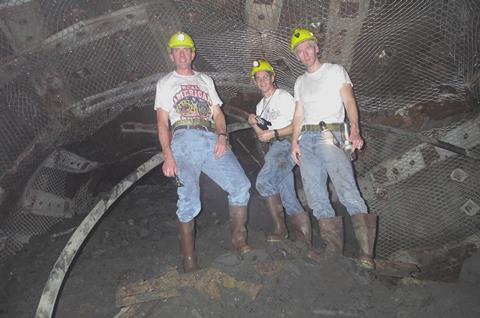Which microbes thrive below us in darkness – in gold mines, in aquifers, in deep boreholes in the seafloor – and how do they compare to the microbiomes that envelop the Earth’s surfaces, on land and sea?

The first global study to embrace this huge question, conducted at the Marine Biological Laboratory (MBL), Woods Hole, reveals astonishingly high microbial diversity in some subsurface environments (up to 491 meters below the seafloor and up to 4375 m below ground).
This discovery points to vast, untapped, subsurface reservoirs of diversity for bioprospecting new compounds and medicinals, for understanding how cells adapt to extremely low-energy environments, and for illuminating the search for extraterrestrial life. Led by MBL Associate Scientist Emil Ruff, who sits on Applied Microbiology International’s Ocean Sustainability Advisory Group, the study is published this week in Science Advances.
Surprising diversity
“It’s commonly assumed that the deeper you go below the Earth’s surface, the less energy is available, and the lower is the number of cells that can survive,” Ruff says. “Whereas the more energy present, the more diversity can be generated and maintained—as in tropical forests or coral reefs, where there’s lots of sun and warmth.
READ MORE: The dark biosphere
READ MORE: 2-billion-year-old rock home to living microbes
“But we show that in some subsurface environments, the diversity can easily rival, if not exceed, diversity at the surface. This is particularly true for marine environments and for microbes in the Archaea domain,” he says.
The sweeping study, which took 8 years to complete, is also one of the first to compare the marine vs. terrestrial realms in terms of microbial diversity and community composition.
Universal ecological principle
“Look at plants and animals – very few of them are adapted to both the marine and terrestrial realms. One exception would be salmon,” Ruff says. “An interesting question is whether that is true for microbes as well?”
Yes, they discovered. Marine and terrestrial microbiomes differ greatly in composition, while their level of diversity is similar.
“So, this seems to be a universal ecological principle,” Ruff says. “There’s a very clear divide between life forms in the marine and in the terrestrial realms, not just in the surface, but also in the subsurface. The selective pressures are very different on land and in the sea, and they select for different organisms that have a hard time living in both realms.”
Life in the deep, dark, slow lane
“The first time scientists broadly realized there is a huge reservoir of microbes right under our feet, kilometers deep in rock and below the seafloor, was the mid-1990s,” Ruff says. Scientists now estimate between 50-80 percent of Earth’s microbial cells live in the subsurface, where energy availability can be orders of magnitude less than on the sunlit surface.

With this study, “we can now also appreciate that perhaps half the microbial diversity on Earth is in the subsurface,” Ruff says. “And it’s fascinating that, in these low-energy environments, life seems to be slowed down, sometimes to an absolute minimum. Based on estimates, some subsurface cells divide an average of once every 1,000 years. So, these microbes have completely different timescales of life, and we can potentially learn something about aging from them,” he says.
To survive in the subsurface, “it makes sense to be evolutionarily adapted to absolutely minimize your power and energy requirements and optimize every single part of your metabolism to be as energy efficient as possible,” Ruff says. “And we can also learn from that: How to be extremely efficient when you are working with next to nothing.”
Life on Mars
If Mars or other planets had liquid water at some point in their histories – and there is evidence Mars did – then the rocky ecosystems 3 km below its surface would look very similar to those on Earth, Ruff says. “The energy would be very low; the organisms’ generation times would be very long. Understanding deep life on Earth could be a model for discovering if there was life on Mars, and if it has survived.”

Studies of microbial life in various pockets of the Earth’s surface and subsurface are not new or particularly scarce. But, Ruff says, the data from these studies was difficult, if not impossible, to synthesize due to inconsistencies in the research methodologies that different groups used.
How it happened
In contrast, the present study began in 2016 when Ruff, then a postdoctoral researcher, attended a meeting of the Census of Deep Life, a pioneering effort to assess subsurface microbial life co-led by MBL Distinguished Senior Scientist Mitchell Sogin. For the Census, research groups all over the world sent subsurface samples to MBL, where scientists used the exact same routines to sequence and analyze the samples’ microbial DNA (MBL scientist Hilary Morrison led this part of the work). This provided, for the first time, a consistent dataset that could allow comparison across more than 1,000 samples from 50 marine and terrestrial ecosystems. And Ruff became intrigued by the idea of carrying out this large-scale comparison.

“For the first time, we could directly compare the microbiomes from, say, Great Lakes surface sediment with sediment from two kilometers below the seafloor,” Ruff says. “That’s where the beauty of this synthesis paper is coming from.”







No comments yet